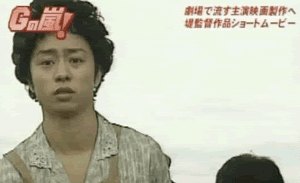Research Aim:
to learn about different parts of a flower and the types of reproduction systems of plants.


Introduction
Botanical Garden( place of research)
Why Botanical Garden?
1st founded by Sir Stamford Raffles, also the founder of Singapore at 1822. Its purpose was to introduce cultivation of economic crops. However, it was closed down in 1829 due to insufficient funding and lack of proper management after Raffles's death.
It was then in 1859 the garden were founded at its present site as a leisure park and ornamental garden by the Agri-Horticultural Society. The garden then undergoes many other developments over the years and now it is under the continued stewardship of Dr Chin as well as becoming a important and popular tourism site in Singapore.
The map of the whole Botanical Garden can be viewed at www.sbg.org.sg/visitorinfo/mapofgroud.asp

The Tembusu Tree
There is no other place more suitable than the Botanical Garden in Singapore if you were to research on flowers and plants.
Flowers( findings before the trip to Botanical Garden )
What are flowers?
Structures of a flower
 Stamen - male part of the flower. Consist of :
Stamen - male part of the flower. Consist of :Anther- produces pollen grains
Filamen- the stalk that holds the anther in a suitable position to disperse the pollen.
Carpel - the female part of the flower. Consist of:
Style - stalk that connects stigma to the ovary
Stigma - swollen structure at the end of the style that receives pollen grains
ovary- contains one or more ovules which contains the female gamete(ovum)
Petal - modified leaves formed on the most conspicious part of a flower.
Sepal - modified leaves which enclose and protect the other parts of the flower in the bud stage.
Receptacle - enlarged end of the flower stalk which bears the other parts of the flower.
The Types of Flowers are :
1. Complete and Incomplete Flowers
2. Unisexual and Bisexual Flowers
3. Superior and Inferior Ovaries
4. Hypogynous, Epigynous, and Perigynous Flowers
5. Fused and Distinct Floral Parts
6. Regular and Irregular Flowers
More detailed info about the types of flower can be found at www.flower-gardens.net/types-of-flowers.html
Content ( Research Findings )
Cattleya Orchid
Is a type of epiphytic orchid.Cattleya orchids are one of the most popular kinds of orchids. The beautiful form and the complexity of the flower and their alluring scent have won the hearts of many.
The cattleya orchid is a monocotyledon angiosperms. Its is pollinated by insects. This is why it has a sweet scent to attracts insects. The insects will then help to transfer the pollen grains to the female part of the flower.
The stigma of the cattleya orchid, in fact, all orchid have 2 important roles. The seperate the anther from the mature part of the mature(fertile) part of the stigma to prevent self-pollination. The other role, which involves a part of the stigma called the viscidium, a sticky pad, when touched, it quickly adheres so that as the pollinator(insect) backs out of the flower the entire pollinarium is removed with it.

Plumeria "Donald Angus" (Frangipani)
The Plumeria or Frangipani is a insect pollinated flower.
Plumeria flowers are most fragrant at night in order to lure sphinx moths to pollinate them. The flowers have no nectar, and simply dupe their pollinators. The moths inadvertently pollinate them by transferring pollen from flower to flower in their fruitless search for nectar.

Taberbaemontana divaricata
Also commonly known as the Crape Jasmine or the pinwheel flower.Crape jasmine is an attractive evergreen tree with green
twigs and milky sap. The shiny, opposite, dark green
leaves, 3–6 inches long, are ovate and pointed, narrowing
into a short stem that clasps the twig. The white,
waxy flowers with five or six lobes are 1–2 inches in
diameter. They have some fragrance at night and are
produced most of the year.
Like many other flowers, it is a insect pollinated flower. Its fragrance and attracttive petals attracts insects.

Alpinia Purpurata ( Red Ginger )
.jpg)
It is also a important food source for forest hummingbird. Sometimes it is even used for nesting.
The Honduran White Bat also lives in tents that is made from heliconia leaves.
We also learn that teamwork is important after the research. During the trip to Botanical Garden, we almost lost our way back but everyone played a part on remembering the direction that we came from. This also tells us that we need to trust our teammates and not just be selfish and ignorant when we are working as a team.



.jpg)
.jpg)
.jpg)
.jpg)









